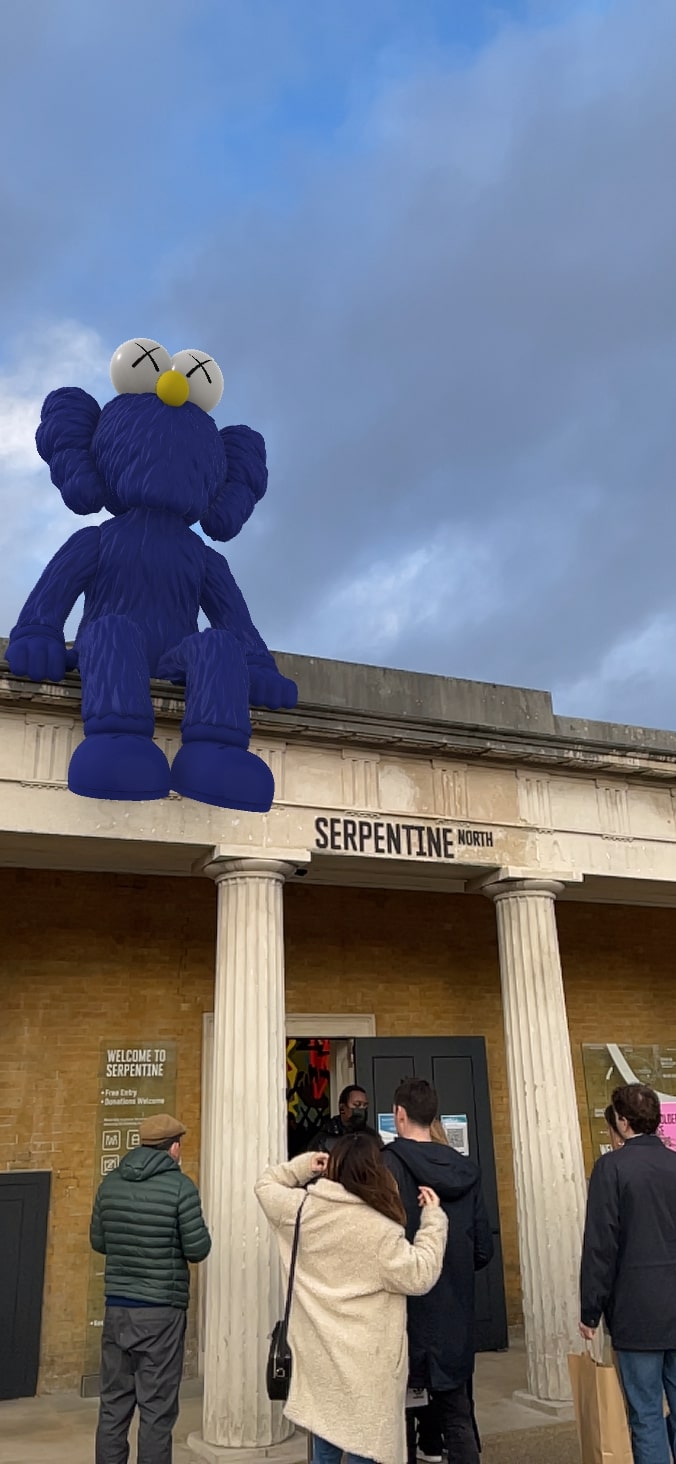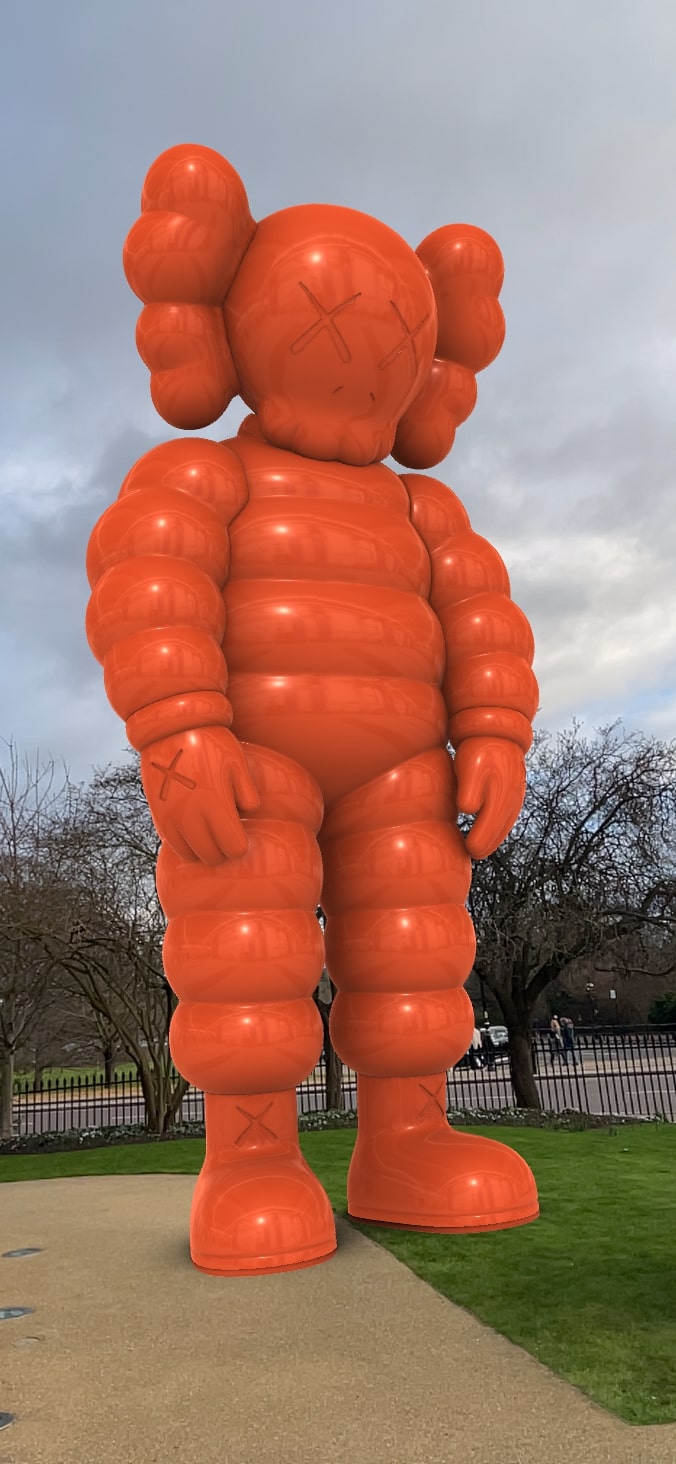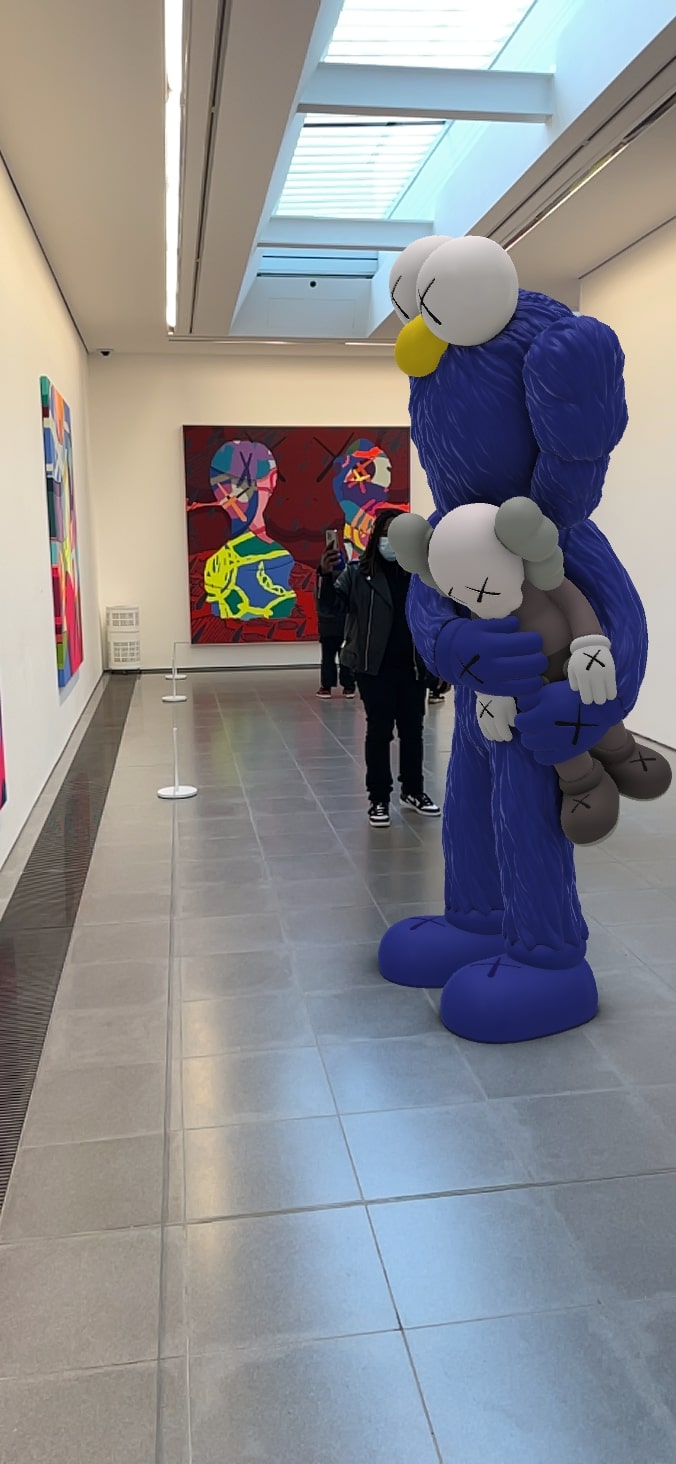Earlier this year, I was idly scrolling Instagram when an interesting post caught my eye. Hyde Park’s Serpentine Gallery was advertising a new exhibition by New York-based graphic artist KAWS, whose famous “Companion” imagery and sculptures have occupied the attention of prestigious auction houses and digital “hypebeasts” alike. It was being billed as the first art exhibition that would be held simultaneously both in real life and on Fortnite.
Not wanting to miss out on a metaverse experience, I picked up a ticket and headed for Hyde Park. The exhibition was underpinned by the Acute Art app, which facilitated the viewing of AR exhibits at the venue as well as allowing users to take photos and videos. The exhibition also incorporated moving artworks as guests were able to switch seamlessly between the real and the virtual from their smartphone.



As all good art does, it got me thinking. This isn’t the first time there have been tie-ups that blur the line between the virtual and the real in arts and culture – hip-hop artist Travis Scott’s 2021 in-game Fortnite concerts showed what was possible at the intersection of commerce, art and virtual worlds, but the idea is much older. In fact, noughties digital world phenomenon Second Life hosted art galleries, such as Dresden’s world famous Old Masters Picture gallery, as long ago as 2007. However, the gap between the virtual and the real has now narrowed significantly and, in some cases, melded together entirely.
We already live in a metaverse of sorts and have done for quite some time. Platforms like Facebook and Twitter hold a huge place in people’s lives and directly influence our perception of the real through targeted storytelling and narrative construction. Advances in computing technologies mean that we all now carry around smartphones more powerful than 90s supercomputers, causing a further blending between on- and offline, like the real/virtual experience at the Serpentine.
So, how to distinguish between meaningful metaverse use cases and pure hype? In the short-term at least, the key to realising the potential of the metaverse for mainstream audiences will be hybrid experiences like this exhibition. We can look at gaming for a good example of how quickly consumers can become familiar with virtual open-world platforms and marketplaces. You could imagine, for instance, getting an NFT through a Fortnite experience that you can then use to unlock access to a real-life exhibition – or unlocking access to specific art pieces, exhibitions or products through acquiring specific digital tokens or coins.
A creative example of innovation in this domain is the NFT collective Bored Ape Yacht Club’s recent airdrop of their new #APE coin to owners and buyers of Bored Ape NFTs. The coins can now be exchanged for fiat currencies via mainstream crypto exchanges such as Coinbase and Gemini. Ownership of digital art in this case has directly led to a real-world currency exchange, and there’s no doubt there’s more creative thinking like this to come.
While a lot of metaverse innovation currently intersects with Web3 technologies such as cryptocurrencies and NFTs, it’s important to stay on top of ethical considerations involving the technologies. Both have received significant criticism about the exploitation of retail investors, and accusations that they entrench wealth and social inequalities. It’s important that the more we combine the real world with metaverses, the more we ensure that this technology is used in an ethical fashion.
The key for communications professionals who want to understand these worlds more deeply is deceptively simple – read and read critically. Go down Twitter rabbit holes, explore Discords, read technology and Web3-native media and follow culture sites such as Hypebeast, and Highsnobiety. As you read, you should always be thinking critically about who the author is, where their expertise is and what they’re trying to achieve. As you do this, you’ll start to get a sense of what is worth exploring and experiencing in this ever-growing world of worlds.